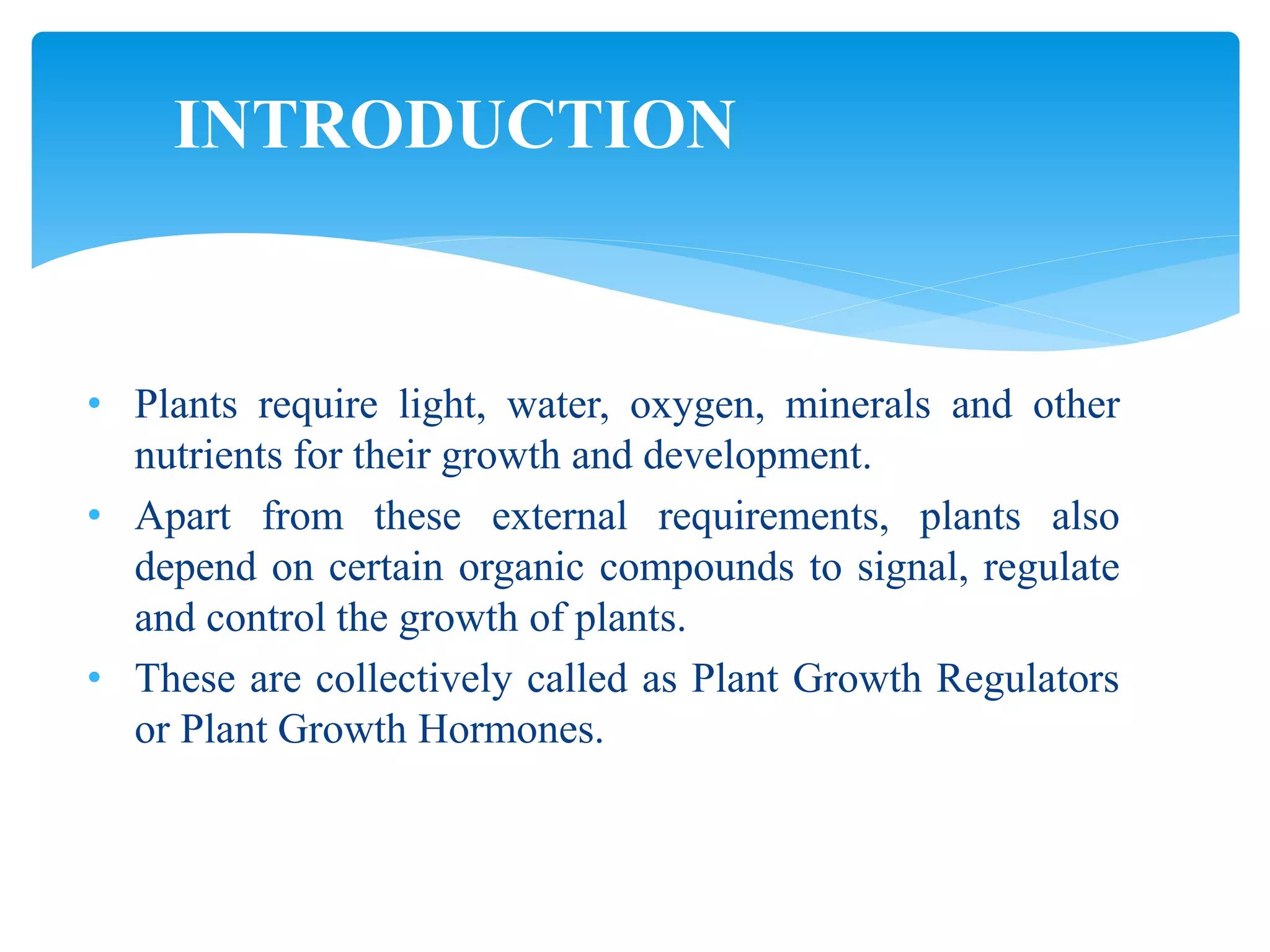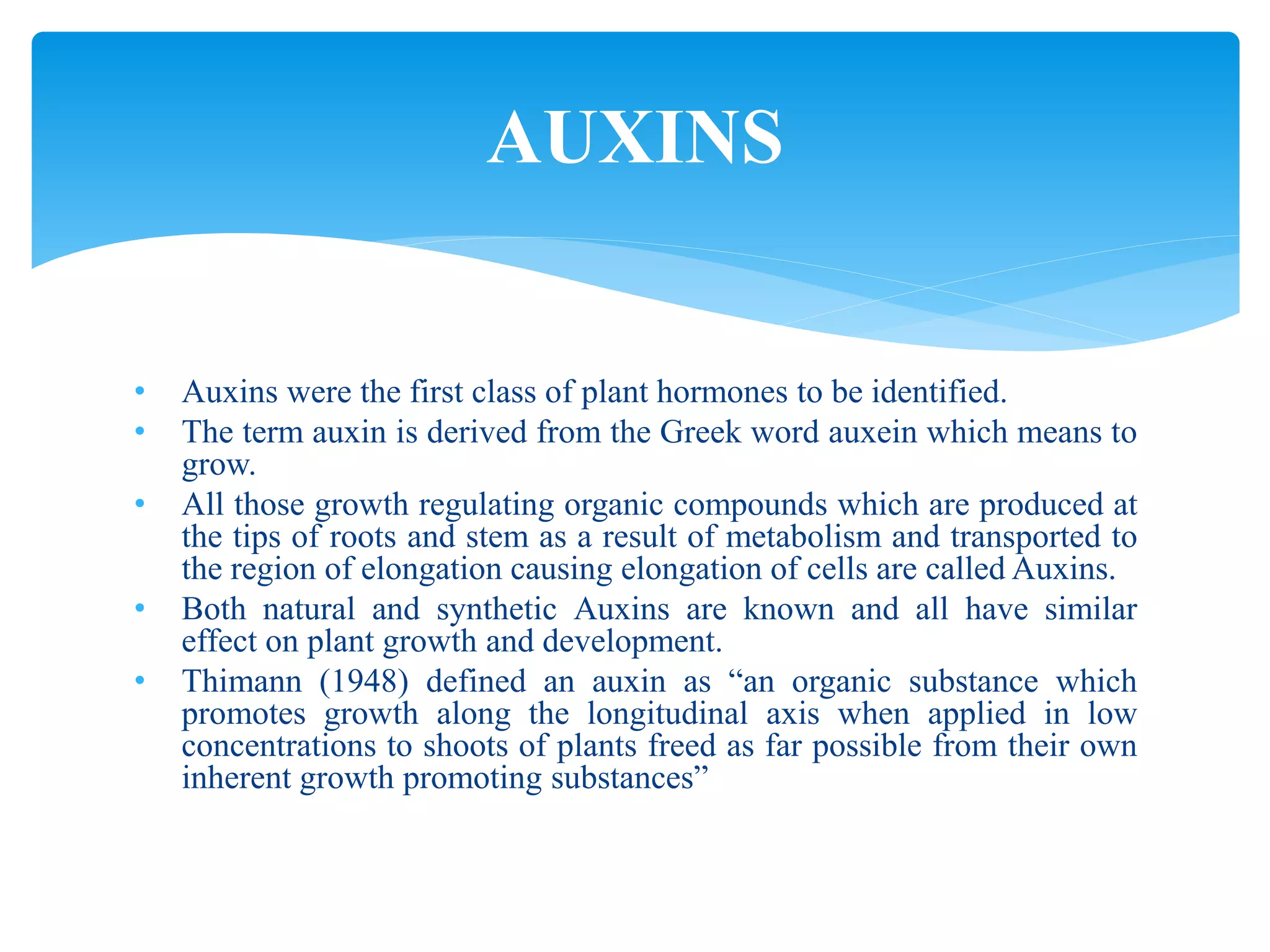Auxins are plant hormones that regulate growth and development. The main auxin is indole-3-acetic acid (IAA) which is synthesized from the amino acid tryptophan through several pathways. IAA is transported from shoot tips to regions of elongation through active transport and influences growth through effects on cell wall plasticity and gene expression. Auxins have many physiological roles including stem elongation, apical dominance, root initiation, fruit development, and growth responses to light.































